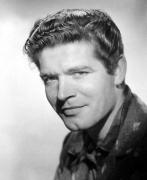|
|
||||||||||||||||||||||||
 |
Featured person
Recently added |
James Maxwell Sanders (1814 - 1846): |
||||||||||||||||||||||
James Maxwell Sanders (sometimes Saunders) was born at Greenhead, Glasgow, on 24 April 1814. When he was aged three his parents died and he was brought up in Glasgow by his paternal uncle, Maxwell Sanders, and his wife. He received his early education locally until aged twelve, in 1826, when the family moved to Belfast (Donegall Street) where he was enrolled in the Belfast Academical Institution (“Royal” from 1831, and referred to as RBAI). He was an industrious pupil and left in May 1830 with a good academic record and character and keen to receive a medical education. Malcolm (p.127) asserts that Sanders received “a preliminary portion of his professional education [in Belfast]”, and although the RBAI Medical Faculty was not created until 1835, James Lawson Drummond MD was already giving lectures and providing dissecting facilities in ‘anatomy and medical physiology’ for occasional, usually mature students who annually averaged about twenty, a group composed mainly of some preparing for the Presbyterian ministry, “for which I think the classes must be of great importance” and also “to a number of medical men, apothecaries, apprentices and others” (Froggatt, 1976). Drummond was also giving prescribed lectures in botany, and it seems almost certain that the keen Sanders would have attended all these classes before he left Belfast to extend his medical education in Dublin and Glasgow. He finally settled in Edinburgh where he took the Licence of the Royal College of Surgeons of Edinburgh (LRCS Edin.) in 1835 and in the same year became Doctor of Medicine (MD) of the University of Edinburgh, his thesis being ‘On Delirium Tremens’. He returned to Belfast that year and was at once appointed, for the 1835-6 session at RBAI, “demonstrator in anatomy”’ by Lawson Drummond, Professor of Anatomy in the recently created (October 1835) Faculty of Medicine, and he was now in effect assistant to Drummond who had formerly formed a good impression of him as a student, and he was subsequently re-appointed for the session, 1836-7. In 1836 he was also appointed medical officer to the Belfast Dispensary No.2 (“bounded by York Street, George’s Street, Carrick Hill, Peter’s Hill, North Street, Exchange Street and Donegall Street”), a usual prelude for a well-qualified doctor aspiring to be a member of the hospital visiting specialist staff. However, in August 1837 he resigned from his RBAI and Dispensary appointments and, for reasons now obscure, accepted a post as medical officer to the Ardglass Dispensary, County Down, for 1837-1838 though returning in the summer of 1838 to Belfast on being appointed to the staff of the Belfast Dispensary and Fever Hospital, a measure of his standing among his seniors just as earlier his popularity as a teacher had been rewarded by his students who in 1836 had presented him with a pocket silver lancet holder, nearly three inches in height and able to hold six lancets, and which is on display amongst the memorabilia at the Royal Victoria Hospital. Belfast.
Along with his medical duties Sanders now took an interest in the organisation of the medical profession in Ulster and in the well-being of its members and of their bereaved families. He had been honorary secretary of the revived Belfast Medical Society since 1836 (and remained so until his death in 1846); but his main involvement was in the early organisation of the Medical Benevolent Fund Society of Ireland which had been formed in 1842 and which, in 1843, he successfully suggested should have a Belfast branch which would include exclusively practitioners in Belfast and Counties Antrim and Down, and he took an active role in its development. Also, like many Belfast medical men of the time he took an interest in scientific societies, and in 1835 he became a member of the Belfast Natural History and Philosophical Society, which had been founded in 1821 by eight youthful enthusiasts one of whom was Dr James Lawson Drummond who encouraged Sanders to join, and he read two papers before the Society, “The organ of touch”’ (on 4 January 1837), and “The comparative osteology of the arm” (on 13 February 1840). When not yet thirty he married Marianne Barnsley on 12 December 1843 in Donaghadee Church of Ireland Church but died after a prolonged illness, probably tuberculosis, on 26 July 1846 at Shrubhill, Belfast, and is buried in Clifton Street graveyard: an accompanying monument was erected by his colleagues, and the words of Andrew Malcolm: “None, probably, at his early age [31] ever before enjoyed so high a place in the public mind” are his epitaph.
| Born: | 24 April 1814 |
| Died: | 26 July 1846 |
| Peter Froggatt |
| Bibliography: RSJ Clarke: A Directory of Ulster Doctors (who qualified before 1901), (Belfast: Ulster History Foundation, 2013, Vol II, p.1004; AG Malcolm:,A History of the General Hospital, Belfast, and the other Medical Institutions of the Town, Etc. (Belfast: W & G Agnew, 1851, pp .60, 61, 127); P Froggatt: “The Foundation of the “Inst” Medical Department and its Association with the Belfast Fever Hospital”, The Ulster Medical Journal, 45, pp. 107-145 (1976); WA Eakins: “The Royal Medical Benevolent Fund Society of Ireland”, The Ulster Medical Journal, 61, pp.94-97 (1992); JR Fisher &, JH Robb: Royal Belfast Academical Institution: Centenary Volume, 1810-1910 (Belfast: McCaw, Stevenson & Orr, 1913 p.259); A Deane (Edit.); The Belfast Natural History and Philosophical Society: Centenary Volume (Belfast: W Erskine Mayne, 1924, pp.151, 198) |


Home | Our Policies | Plaques | Browse | Search | Sponsors | Links | Help | Contact
Privacy & Disclaimer | Cookie Policy | Site Map | Website Design By K-Point
© 2024 Ulster History Circle









